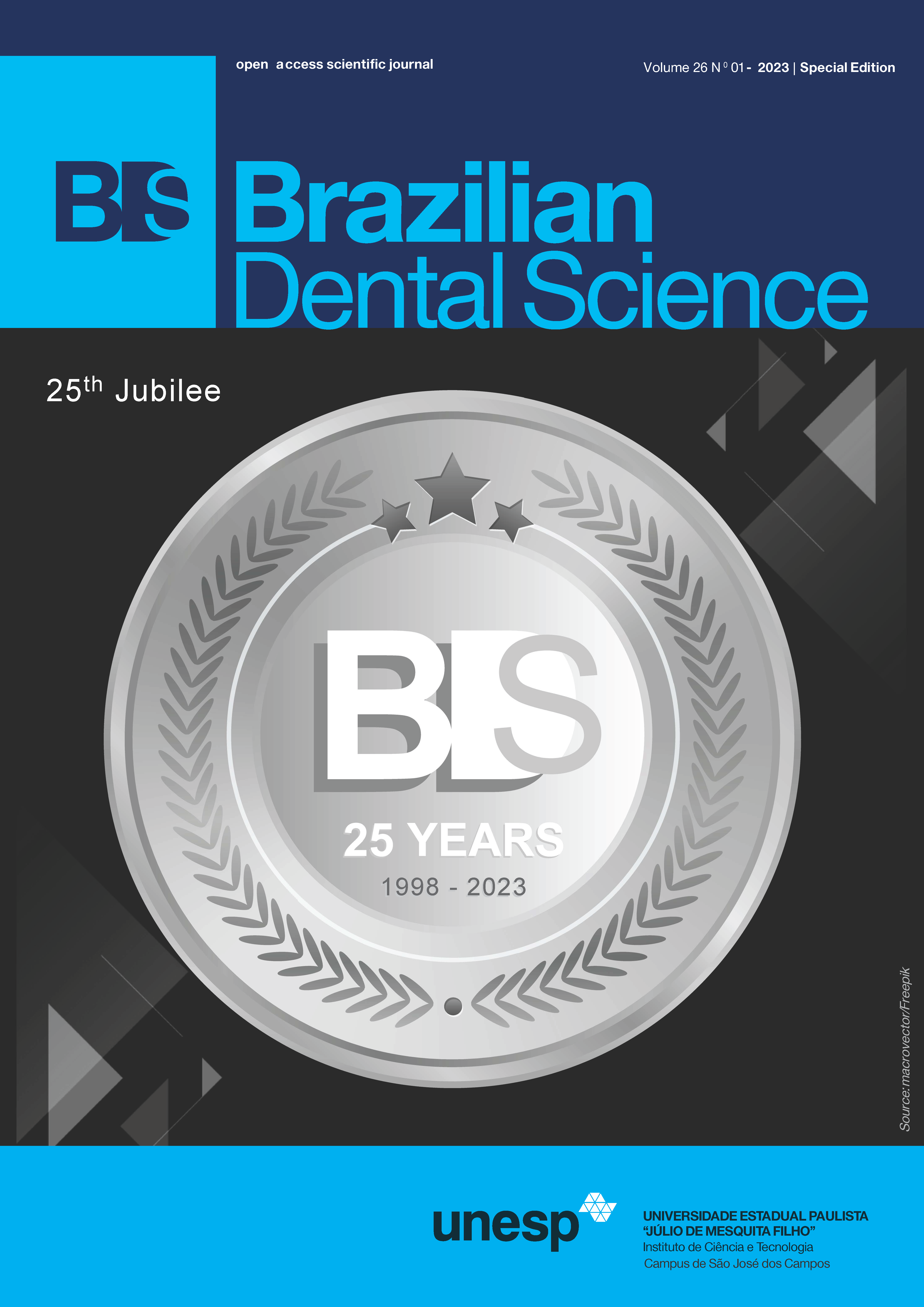A radiation free alternative to CBCT volumetric rendering for soft tissue evaluation
DOI:
https://doi.org/10.4322/bds.2023.e3726Resumo
Objective: The aim of the present study is to evaluate whether a “radiation free” method using 3D facial scan can replace Cone Beam Computed Tomography (CBCT) volumetric rendering of soft tissue of the patient to assess maxillofacial surgery outcomes and compare the reference points and angular measurements of patient facial soft tissue. Material and Methods: Facial soft tissue scan of the patient’s face, before and after orthognathic surgery and a CBCT of the skull for volumetric rendering of soft tissues were carried out. The 3D acquisitions were processed using Planmeca ProMax 3D ProFace® software (Planmeca USA, Inc.; Roselle, Illinois, USA). The participant were positioned in a natural position during the skull scannering. Three sagittal angular measurements were performed (Tr-NA, Tr-N-Pg, Ss-N-Pg) and two verticals (Go-N-Me, Tr-Or-Pg) on facial soft tissue scan and on the patient’s 3D soft tissue CBCT volumetric rendering. Results: A certain correspondence has been demonstrated between the measurements obtained on the Proface and those on the CBCT. Conclusion: A radiation free method was to be considered an important diagnostic tool that works in conditions of not subjecting the patient to harmful ionizing radiation and it was therefore particularly suitable for growing subjects. The soft tissue analysis based on the realistic facial scan has shown sufficient reliability and reproducibility even if further studies are needed to confirm the research result.
Keywords
CBCT; Ionizing radiation; Soft tissue; Orthodontics; Diagnosis.
Downloads
Downloads
Publicado
Como Citar
Edição
Seção
Licença
TRANSFERÊNCIA DE DIREITOS AUTORAIS E DECLARAÇÃO DE RESPONSABILIDADE
Toda a propriedade de direitos autorais do artigo "____________________________________________________________________" é transferido do autor(es) para a CIÊNCIA ODONTOLÓGICA BRASILEIRA, no caso do trabalho ser publicado. O artigo não foi publicado em outro lugar e não foi submetido simultaneamente para publicação em outra revista.
Vimos por meio deste, atestar que trabalho é original e não apresenta dados manipulados, fraude ou plágio. Fizemos contribuição científica significativa para o estudo e estamos cientes dos dados apresentados e de acordo com a versão final do artigo. Assumimos total responsabilidade pelos aspectos éticos do estudo.
Este texto deve ser impresso e assinado por todos os autores. A versão digitalizada deverá ser apresentada como arquivo suplementar durante o processo de submissão.




























